| Listing 1 - 10 of 113 | << page >> |
Sort by
|
Book
ISBN: 9781785285912 1785285912 1785280333 9781785280337 Year: 2015 Publisher: Birmingham : Packt Publishing,
Abstract | Keywords | Export | Availability | Bookmark
 Loading...
Loading...Choose an application
- Reference Manager
- EndNote
- RefWorks (Direct export to RefWorks)
Harness the power of Nginx to make the most of your infrastructure and serve pages faster than ever About This Book Discover possible interactions between Nginx and Apache to get the best of both worlds Learn to exploit the features offered by NGinx for your web applications Get the newest techniques available, designed with the latest version in mind Who This Book Is For By covering both the early setup stages and advanced topics, this book suits web administrators who interested in solutions to optimize their infrastructure, whether you are looking into replacing your existing web server software or integrating a new tool to cooperate with applications that are already up and running. If you, your visitors, and your operating system have been disappointed by Apache, this book is exactly what you need. What You Will Learn Get to know the basics of the Nginx configuration: syntax, structure, and semantics Understand the advanced load balancing functionality of Nginx and the newest innovative IO mechanisms Create virtual host configurations effortlessly Discover all the first-party modules: how to enable, configure, and use them Establish advanced rewrite rules with the Nginx Rewrite module Set up Nginx to work with PHP, Python, and more via FastCGI Configure Nginx to work as frontend for your existing HTTP server Manipulate configuration files with ease and adapt them to various situations Discover the common pitfalls and find out how to avoid them In Detail Nginx is a lightweight HTTP server designed for high-traffic websites, with network scalability as the primary objective. With the advent of high speed Internet access, short loading times and fast transfer rates have become a necessity. This free, open source solution will either come as a full replacement of other software such as Apache, or stand in front of your existing infrastructure to improve its overall speed. This book is a detailed guide to setting up Nginx in different ways that correspond to actual production situations: as a standalone server, as a reverse proxy, interacting with applications via FastCGI, and more. In addition, this complete directive reference will be your best friend at all stages of the configuration and maintenance processes. This book is the perfect companion for both Nginx beginners and experienced administrators. For beginners, it will take you through the complete process of setting up this lightweight HTTP server on your system and configuring its va...
Book
Year: 2020 Publisher: مركز الكتاب الاكاديمي
Abstract | Keywords | Export | Availability | Bookmark
 Loading...
Loading...Choose an application
- Reference Manager
- EndNote
- RefWorks (Direct export to RefWorks)
Hypertext literature, Arabic --- Arabic literature --- Hypertext systems --- History and criticism. --- History and criticism --- Data processing.
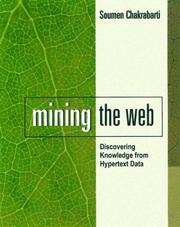
ISBN: 1558607544 9781558607545 1493303643 9786611035327 1281035327 0080511724 9780080511726 0585449996 9780585449999 9781281035325 661103532X Year: 2002 Publisher: San Francisco: Morgan Kaufmann,
Abstract | Keywords | Export | Availability | Bookmark
 Loading...
Loading...Choose an application
- Reference Manager
- EndNote
- RefWorks (Direct export to RefWorks)
Mining the Web: Discovering Knowledge from Hypertext Data is the first book devoted entirely to techniques for producing knowledge from the vast body of unstructured Web data. Building on an initial survey of infrastructural issues-including Web crawling and indexing-Chakrabarti examines low-level machine learning techniques as they relate specifically to the challenges of Web mining. He then devotes the final part of the book to applications that unite infrastructure and analysis to bring machine learning to bear on systematically acquired and stored data. Here the focus is on results: the st
Information systems --- Data mining. --- Hypertext systems. --- Web databases. --- Data mining --- Hypertext systems --- Web databases --- Databases --- Hypertext --- Interactive multimedia --- Algorithmic knowledge discovery --- Factual data analysis --- KDD (Information retrieval) --- Knowledge discovery in data --- Knowledge discovery in databases --- Mining, Data --- Database searching
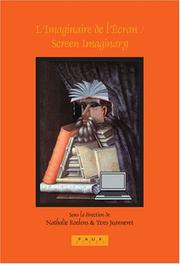
ISBN: 9042019611 9004490310 Year: 2004 Volume: 248 Publisher: Leiden; Boston : BRILL,
Abstract | Keywords | Export | Availability | Bookmark
 Loading...
Loading...Choose an application
- Reference Manager
- EndNote
- RefWorks (Direct export to RefWorks)
This book will be of interest to all those who have engaged with hypertext either as creators or as users. They will discover that screen writing has a history going back to a number of avant-garde practices which already incorporated a screen imaginary into the creative work. Readers of this volume will be offered a privileged insight into a debate between detractors and advocates of the new modes of writing and reading and the new means of cultural transmission (CD-ROM, the Internet, digitisation); they will thus be able to weigh up for themselves the assets and illusions, the heuristic merits and politico-commercial issues at stake. May these reflections convert the globe-trotters of hyperspace into knowledgeable navigators! Cet ouvrage intéressera quiconque est confronté à l'hypertexte, que ce soit en tant que concepteur ou en tant qu'usager. Il découvrira ici que l'écrit d'écran a une histoire qui remonte à certaines pratiques avant-gardistes qui avaient déjà intégré un imaginaire de l'écran dans leurs créations. Il entrera de plain-pied dans un débat entre détracteurs et partisans des nouvelles modalités d'écriture/lecture et des nouveaux supports de transmission culturelle (cd-rom, Internet, digitalisation), afin qu'il puisse lui-même faire la part entre les atouts et les leurres, entre les mérites heuristiques et les enjeux politico-mercantiles. Que ces réflexions puissent convertir les globe-trotters de l'hypersphère en navigateurs avertis!.
Computer assisted instruction --- Computer architecture. Operating systems --- Literature --- Hypertext (Systèmes) --- Hypertext systems --- Hypertext-systemen --- Literature [Experimental ] --- History and criticism --- Digital literature --- Hypertext systems. --- Literature and technology. --- Literature and the Internet. --- History and criticism.
Book
ISBN: 9780874217490 Year: 2009 Publisher: Utah State University Press/ Computers and Composition Digital Press
Abstract | Keywords | Export | Availability | Bookmark
 Loading...
Loading...Choose an application
- Reference Manager
- EndNote
- RefWorks (Direct export to RefWorks)
Together, computerized writing environments (e.g., physical spaces, hardware, software, and networks) and the humans who use and support such technologies comprise complex ecologies of interaction. As with any ecology, a human-computer techno-ecological system needs to be planned, fostered, designed, sustained, and assessed to create a vibrant culture of support at the individual, programmatic, institutional, and even national and international level. Local and larger infrastructures of composing are critical to digital writing practices and processes. In academia, specifically, all writing is increasingly computer-mediated; all writing is digital. Unfortunately, at far too many institutions, it is difficult to sustain ecologies of digital writing. How then to best plan, foster, design, sustain, and assess the complex ecologies framing the study and practice of digital writing that we do (or hope to do) as teachers, scholars, learners, and writers? The audience for this collection is teachers, scholars, administrators, and graduate students working in fields of composition studies, computers and writing, technical/professional communication, literature, education, and English education. We all face the same dilemma: More and more of our work and instruction takes place in electronic environments, but budget constraints and assessment mandates loom, and often our positions within or institutions prohibit us from active participation in central computing endeavours. This necessarily multivocal collection refines our discussions of the many components of sustainability, providing contextual, situated, and flexible modes and methods for theorizing, building, assessing, and sustaining digital writing ecologies.
English language --- Report writing --- Electronic portfolios in education --- Hypertext systems --- English --- Languages & Literatures --- English Language --- Rhetoric --- Computer-assisted instruction --- Study and teaching --- ePortfolios in education --- Portfolios in education --- Hypertext --- Interactive multimedia --- Germanic languages --- English language -- Rhetoric -- Computer-assisted instruction. English language -- Rhetoric -- Study and teaching. Report writing -- Study and teaching. Electronic portfolios in education. Hypertext systems. --- Electronic portfolios in education. --- Hypertext systems. --- Computer-assisted instruction. --- Rhetoric. --- Study and teaching.
Book
ISBN: 9535157450 9537619540 Year: 2010 Publisher: IntechOpen
Abstract | Keywords | Export | Availability | Bookmark
 Loading...
Loading...Choose an application
- Reference Manager
- EndNote
- RefWorks (Direct export to RefWorks)
Having lived with the World Wide Web for twenty years, surfing the Web becomes a way of our life that cannot be separated. From latest news, photo sharing, social activities, to research collaborations and even commercial activities and government affairs, almost all kinds of information are available and processible via the Web. While people are appreciating the great invention, the father of the Web, Sir Tim Berners-Lee, has started the plan for the next generation of the Web, the Semantic Web. Unlike the Web that was originally designed for reading, the Semantic Web aims at a more intelligent Web severing machines as well as people. The idea behind it is simple: machines can automatically process or “understand” the information, if explicit meanings are given to it. In this way, it facilitates sharing and reuse of data across applications, enterprises, and communities. According to the organisation of the book, the intended readers may come from two groups, i.e. those whose interests include Semantic Web and want to catch on the state-of-the-art research progress in this field; and those who urgently need or just intend to seek help from the Semantic Web. In this sense, readers are not limited to the computer science. Everyone is welcome to find their possible intersection of the Semantic Web.
World Wide Web. --- W3 (World Wide Web) --- Web (World Wide Web) --- World Wide Web (Information retrieval system) --- WWW (World Wide Web) --- Hypertext systems --- Multimedia systems --- Internet --- Web services
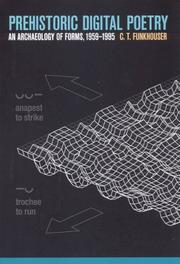
ISBN: 0817380876 9780817380878 9780817315627 0817315624 9780817354220 0817354220 Year: 2007 Publisher: Tuscaloosa : University of Alabama Press,
Abstract | Keywords | Export | Availability | Bookmark
 Loading...
Loading...Choose an application
- Reference Manager
- EndNote
- RefWorks (Direct export to RefWorks)
A singular and major historical view of the birth of electronic poetry. For the last five decades, poets have had a vibrant relationship with computers and digital technology. This book is a documentary study and analytic history of digital poetry that highlights its major practitioners and the ways that they have used technology to foster a new aesthetic. Focusing primarily on programs and experiments produced before the emergence of the World Wide Web in the mid-1990s, C. T. Funkhouser analyzes numerous landmark works of digital poetry to illustrate that the founda
Hypertext systems. --- Interactive multimedia. --- Computer poetry --- Hypertext --- Interactive multimedia --- Hypermedia systems --- Interactive media --- Computer software --- Poetics --- Computational linguistics --- Poetry --- Technique. --- History and criticism. --- Computer poetry.
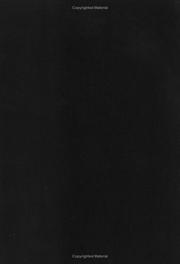
ISBN: 0262275139 0585443076 9780262275132 9780585443072 0262083116 9780262083119 0262582155 9780262582155 Year: 2002 Publisher: Cambridge, Mass. : MIT Press,
Abstract | Keywords | Export | Availability | Bookmark
 Loading...
Loading...Choose an application
- Reference Manager
- EndNote
- RefWorks (Direct export to RefWorks)
A pseudo-autobiographical exploration of the artistic and cultural impact of the transformation of the print book to its electronic incarnations.Tracing a journey from the 1950s through the 1990s, N. Katherine Hayles uses the autobiographical persona of Kaye to explore how literature has transformed itself from inscriptions rendered as the flat durable marks of print to the dynamic images of CRT screens, from verbal texts to the diverse sensory modalities of multimedia works, from books to technotexts.Weaving together Kaye's pseudo-autobiographical narrative with a theorization of contemporary literature in media-specific terms, Hayles examines the ways in which literary texts in every genre and period mutate as they are reconceived and rewritten for electronic formats. As electronic documents become more pervasive, print appears not as the sea in which we swim, transparent because we are so accustomed to its conventions, but rather as a medium with its own assumptions, specificities, and inscription practices. Hayles explores works that focus on the very inscription technologies that produce them, examining three writing machines in depth: Talan Memmott's groundbreaking electronic work Lexia to Perplexia, Mark Z. Danielewski's cult postprint novel House of Leaves, and Tom Phillips's artist's book A Humument. Hayles concludes by speculating on how technotexts affect the development of contemporary subjectivity.Writing Machines is the second volume in the Mediawork Pamphlets series.
Criticism --- Literature and technology. --- Hypertext systems. --- Literature and technology --- Hypertext systems --- Literature - General --- Languages & Literatures --- Data processing. --- Data processing --- Hypertext --- Industry and literature --- Technology and literature --- Evaluation of literature --- Literary criticism --- Literature --- Technique --- Evaluation --- Interactive multimedia --- Technology --- Rhetoric --- Aesthetics --- DIGITAL HUMANITIES & NEW MEDIA/General
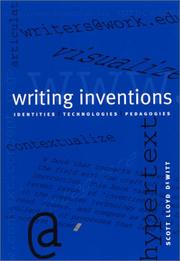
ISBN: 1417500247 9781417500246 0791450406 9780791450406 0791450392 9780791450390 0791490319 Year: 2001 Publisher: Albany, New York : State University of New York Press,
Abstract | Keywords | Export | Availability | Bookmark
 Loading...
Loading...Choose an application
- Reference Manager
- EndNote
- RefWorks (Direct export to RefWorks)
Winner of the 2002 Computers & Composition Distinguished Book Award presented by Clarkson University's Eastman Kodak Center for Excellence in CommunicationThe increasing role of computer technology in the classroom has left many teachers searching for resources that will make sense of complex theories and provide them with practical pedagogical direction. Offering instructional stories, histories, and classroom applications, Writing Inventions connects the theoretical aspirations of the field with the craft of innovative composition instruction. Focusing on issues of "invention," the book explores "writing inventions"—the computer technology that students use to research, read, create, and compose. But "invention" also refers to the rich collection of processes that lead to what is not yet known: topics for writing, personal and professional identities, and new pedagogies. Methods for teaching invention using the World Wide Web are also outlined, arguing that the Web allows students and teachers to see into each other's learning processes. In the end, Writing Inventions tells stories—instructional accounts of computers and teaching writing that balance theory and practice.
English language --- Report writing --- World Wide Web. --- Hypertext systems. --- Rhetoric --- Study and teaching --- Technological innovations. --- Data processing. --- Study and teaching (Higher) --- Study and teaching. --- Research paper writing --- Research report writing --- Term paper writing --- Authorship --- Hypertext --- Interactive multimedia --- W3 (World Wide Web) --- Web (World Wide Web) --- World Wide Web (Information retrieval system) --- WWW (World Wide Web) --- Hypertext systems --- Multimedia systems --- Internet --- Germanic languages
Book
ISBN: 0262271427 0585354448 9780585354446 0262041197 9780262271424 9780262041195 0262121573 9780262121576 Year: 1991 Publisher: Cambridge, Mass. : MIT Press,
Abstract | Keywords | Export | Availability | Bookmark
 Loading...
Loading...Choose an application
- Reference Manager
- EndNote
- RefWorks (Direct export to RefWorks)
Criticism --- Criticism, Textual --- Interactive multimedia. --- Hypertext systems. --- Digital humanities. --- Humanities --- Hypertext --- Interactive multimedia --- Hypermedia systems --- Interactive media --- Computer software --- Textual criticism --- Editing --- Evaluation of literature --- Literary criticism --- Literature --- Rhetoric --- Aesthetics --- Data processing. --- Data processing --- Information technology --- Technique --- Evaluation --- Use of --- Multi-media --- Epic poetry, Greek Criticism, Textual --- Criticism - Data processing --- Criticism, Textual - Data processing --- Hypertext systems
| Listing 1 - 10 of 113 | << page >> |
Sort by
|

 Search
Search Feedback
Feedback About UniCat
About UniCat  Help
Help News
News